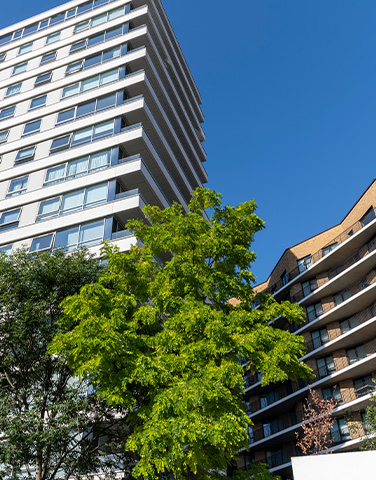
Forfeiture and mixed-use buildings – a bitter-sweet outcome for residential tenants
A County Court appeal in Derwent Lodge Estates Ltd v Signature Living Hotel Ltd (in administration) and others highlights the difficulties that can arise where a head lease of a mixed-use building is forfeited, and sub-tenants of part seek relief from forfeiture. The case highlighted the court’s wide discretion under Section 146 of the Law of Property Act 1925 and the strong emphasis placed on putting the landlord back in the position it would have been in, had the forfeiture not occurred.
Background
The proceedings related to a prominent, mixed-use building, known as West Africa House, comprising a restaurant, event space and 42 residential apartments. The freeholder, Derwent, granted a head lease of the entire building to Signature Living Hotel Limited for a term of 998 years. Signature Living then developed the apartments and granted 250-year sub-leases to individual residential tenants.
Signature Living’s head lease was forfeited for non-payment of rent. As forfeiture of the head lease automatically led to all of the sub-leases also being terminated, the residential tenants and their mortgagees applied for relief from forfeiture under Section 146(4) of the Law of Property Act 1925 and also sought a new head lease of the residential flats only (excluding the commercial units so without repairing and insuring obligations). Whilst Derwent did not object to relief being granted, it contended that the new lease should be of the whole of the building, mirroring the forfeited headlease (and this would result in the residential tenants being the commercial tenants’ landlord and thereby burdened by substantial rental obligations and repairing and insuring obligations)
Decision
At first instance, the District Judge, found in favour of the freeholder and granted relief, conditional on the sub-tenants paying the rent arrears in relation to the whole building (not just the part occupied by the residential sub-tenants). A new lease was vested to the residential sub-tenants on the same terms as the forfeited head lease, save that the term of the lease should be equivalent to the unexpired term of the residential sub-lease. As well as paying the arrears, a condition of relief was that the sub-tenants would also transfer the new lease to a management company, who would grant leasebacks on terms equivalent to the sub-underleases. The residential sub-tenants appealed. The sub-tenants sought relief limited to the residential floors on terms similar to their sub-leases. The court dismissed the appeal, upholding the decision at first instance in favour of the freeholder.
Court’s reasoning
The court emphasised that the overriding consideration was to restore the freeholder to the position it was in before the forfeiture, and in this case, that included receiving rent of £80,000 per annum and imposing no less onerous covenants on the sub-tenants than those in the original head lease. Vesting a new lease of part only of the building would leave the freeholder, in a far worse position both in terms of recoverable rent but also would have required the freeholder to take on repairing and insuring obligations that previously rested with Signature Living (as landlord in the head lease). The freeholder would also have been subject to stringent statutory obligations arising from the Building Safety Act 2022 – and would have been required to take on the role of “Accountable Person” under the Act (Building Safety Act 2022 (update)
Our thinking
The decision underscores the court’s approach to relief from forfeiture in cases involving mixed-use buildings, balancing the interests of the head landlord and sub-tenants, whilst adhering to the principle of restoring the landlord to its position prior to the breach. The case also acts as a warning for residential tenants when entering into a long residential sub-lease granted at a premium where the head lease reserves a large rent. If a head lease is forfeited and sub-tenants seek relief, they are likely to need to meet the costs of significant rent arrears as a condition of securing relief.
How we can help
The residential sub-tenants have sought permission to appeal. We will keep you updated on the outcome. We regularly advise landlords and tenants alike in relation to forfeiture proceedings. Please do contact our real estate team if you would like to discuss further.
This article was published in the July edition of Property Perspectives.
Subscribe to receive our monthly newsletter direct to your inbox.
You might also be interested in
Related services
Related sectors






 Download PDF
Download PDF








